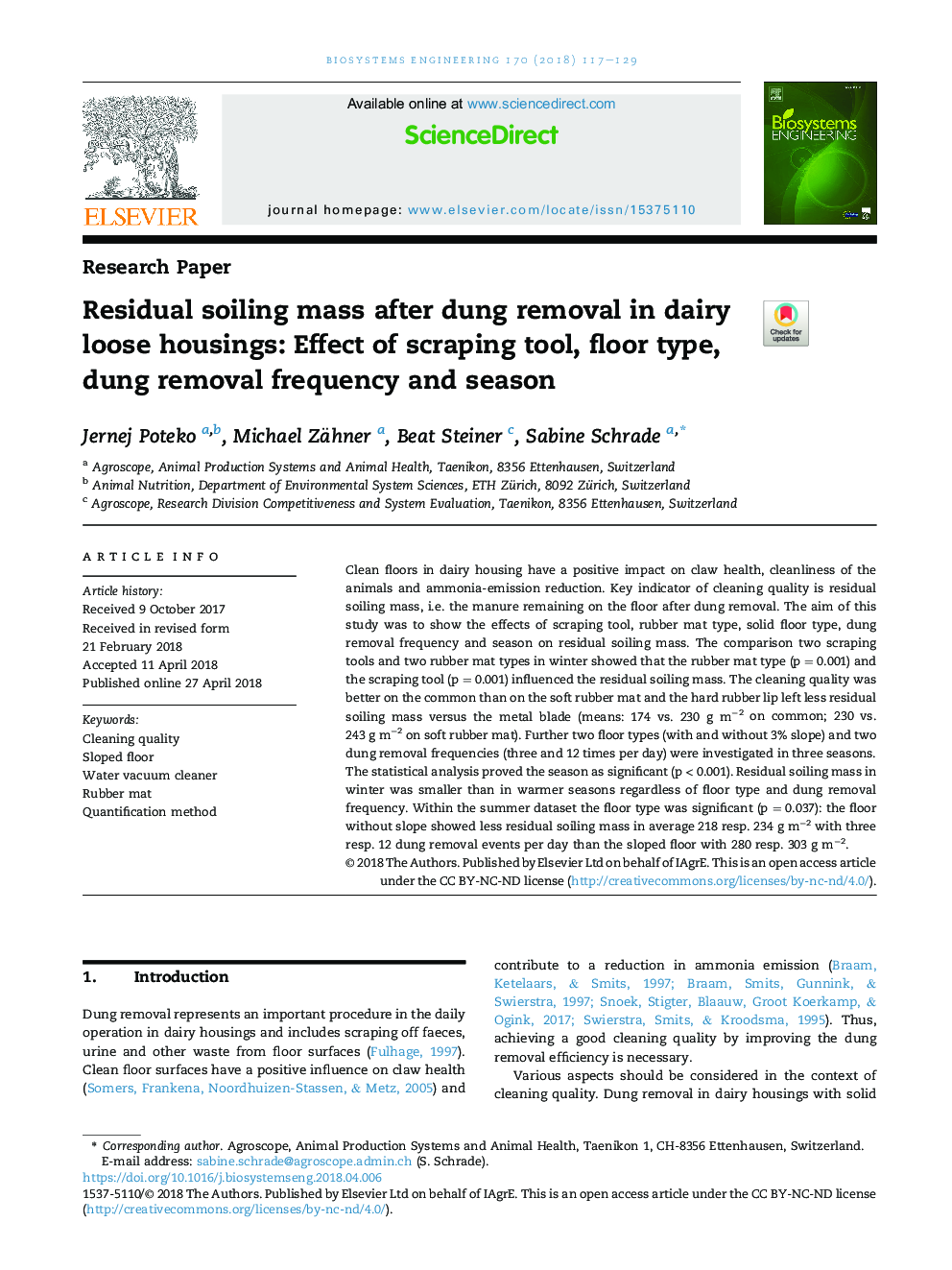| Article ID | Journal | Published Year | Pages | File Type |
|---|---|---|---|---|
| 8054718 | Biosystems Engineering | 2018 | 13 Pages |
Abstract
Clean floors in dairy housing have a positive impact on claw health, cleanliness of the animals and ammonia-emission reduction. Key indicator of cleaning quality is residual soiling mass, i.e. the manure remaining on the floor after dung removal. The aim of this study was to show the effects of scraping tool, rubber mat type, solid floor type, dung removal frequency and season on residual soiling mass. The comparison two scraping tools and two rubber mat types in winter showed that the rubber mat type (p = 0.001) and the scraping tool (p = 0.001) influenced the residual soiling mass. The cleaning quality was better on the common than on the soft rubber mat and the hard rubber lip left less residual soiling mass versus the metal blade (means: 174 vs. 230 g mâ2 on common; 230 vs. 243 g mâ2 on soft rubber mat). Further two floor types (with and without 3% slope) and two dung removal frequencies (three and 12 times per day) were investigated in three seasons. The statistical analysis proved the season as significant (p < 0.001). Residual soiling mass in winter was smaller than in warmer seasons regardless of floor type and dung removal frequency. Within the summer dataset the floor type was significant (p = 0.037): the floor without slope showed less residual soiling mass in average 218 resp. 234 g mâ2 with three resp. 12 dung removal events per day than the sloped floor with 280 resp. 303 g mâ2.
Keywords
Related Topics
Physical Sciences and Engineering
Engineering
Control and Systems Engineering
Authors
Jernej Poteko, Michael Zähner, Beat Steiner, Sabine Schrade,
